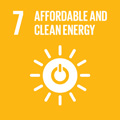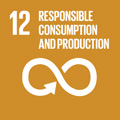- Docente: Paola Ceroni
- Credits: 8
- SSD: CHIM/03
- Language: English
- Teaching Mode: Traditional lectures
- Campus: Bologna
- Corso: Second cycle degree programme (LM) in Photochemistry and Molecular Materials (cod. 9074)
-
from Sep 16, 2024 to Dec 17, 2024
Learning outcomes
At the end of the course the student has acquired knowledge to analyze photoinduced intra- and intermolecular processes and to design photoactive molecular and supramolecular systems with applications for energy conversion, smart materials and luminescent biosensors.
Course contents
Prerequisites: knowledge of physical chemistry bases for the description of atoms and molecules. Basic knowledge of symmetry groups and their use in chemistry.
Programme: the course is designed so that the student will acquire basic concepts of photochemistry and the capacity to tackle real experimental systems. Please find below more details.
1. Introduction : what is photochemistry; history of photochemistry with particular reference to Giacomo Ciamician. Excited states as new chemical species: different energy, lifetime, geometry, dipole moment, redox and acid/base properties, reactivity. Deactivation processes of electronic excited states: rate constants, efficiencies, quantum yields. Lifetimes of an electronic excited state: definition and relation to deactivation rate constants.
2. State diagram of atoms and molecules: orbitals, electronic configurations and excited states of atoms (e.g., oxygen) and diatomic and polyatomic molecules (e.g., dioxygen, formaldehyde, coordination compounds). Outlines of symmetry group theory.
3. Radiative and radiationless processes: molecular wavefunctions and Born-Oppenheimer approximation. Probability and selection rules for radiative transition of absorption, spontaneous and stimulated emission, and for radiationless transitions. Frank-Condon principle, Jablonski diagram: approximation and information that can be obtained from it. Correlation between absorption/emission spectra and the corresponding Jablonski diagram (e.g., benzophenone, naphthalene). Energy upconversion by sensitised triplet-triplet annihilation. Potential energy curves and surfaces for ground and electronic excited states of simple molecules.
4. Bimolecular quenching processes involving electronically excited states: Stern-Volmer equation, excimers and exciplexes. Catalyzed deactivation, photoinduced energy- and electron-transfer. Examples of quenching experiments by measurements of excited state lifetimes and emission quantum yields: static and dynamic quenching.
4.1 Electronic energy transfer: Coulombic and exchange mechanisms; spin selection rules and distance dependence. Applications of sensitization and quenching processes.
4.2 Photoinduced electron transfer: redox potential of electronic excited states. Examples of photocatalysis, conversion of light into chemical energy and vice versa (chemiluminescence and ectrochemiluminescence).
5. Laser: principles of lasers based on 3 or 4 levels. Examples of the most commonly used lasers. Applications in photochemistry, medicine, material science, memories. Basic concepts of time-resolved measurements for identifying transient species (laser-flash photolysis)
6. Excited state properties: different energy, lifetime, geometry (pulsed X-ray techniques), dipole moment (solvatochromic dyes and TICT compounds), reactivity, redox properties, acid-base properties (Förster cycle)
7. Supramolecular photochemistry: definition of a supramolecular system, nature of the interactions between the component units and kinetics of quenching processes.
8. Electron transfer processes in supramolecular systems: Marcus and superexchange theories for electron transfer, effect of the bridge; selected examples from artificial and natural systems.
9. Molecular wires and switches for photoinduced electron and energy transfer: systems based on metal complexes, organic compounds, and DNA. Molecular switches operated by a photochemical mechanism. Plug-socket systems and elongation cables.
10. Photoactive dendrimers and QDs: light-harvesting antennae, sensors with signal amplification. Basic concepts of the photophysics of quantum dots (QDs).
Readings/Bibliography
Lecture notes on the teacher web site.
- V. Balzani, P. Ceroni, A. Juris, Photochemistry and Photophysics: Concepts, Research, Applications, Wiley-VCH, 2014.
- P. Klán, J. Wirz, Photochemistry of Organic Compounds, Wiley 2009.
Teaching methods
The course consists of 8CFU of lectures and discussions on principles of photochemistry and photophysics, accompanied by examples of practical problems, which a student may encounter in the laboratory, and applications related to biomedical field and energy conversion and storage. Interactive learning and in-class exercises will be used to evaluate the student knowledge during the course.
Assessment methods
The examination will be an oral test with an average duration of 30 minutes to verify that the student has acquired knowledge of photochemistry and the capacity to tackle real experimental problems related to photoactive systems and their applications.
Teaching tools
Power Point slides, blackboard and simple experiments in the classroom.
Office hours
See the website of Paola Ceroni
SDGs




This teaching activity contributes to the achievement of the Sustainable Development Goals of the UN 2030 Agenda.
